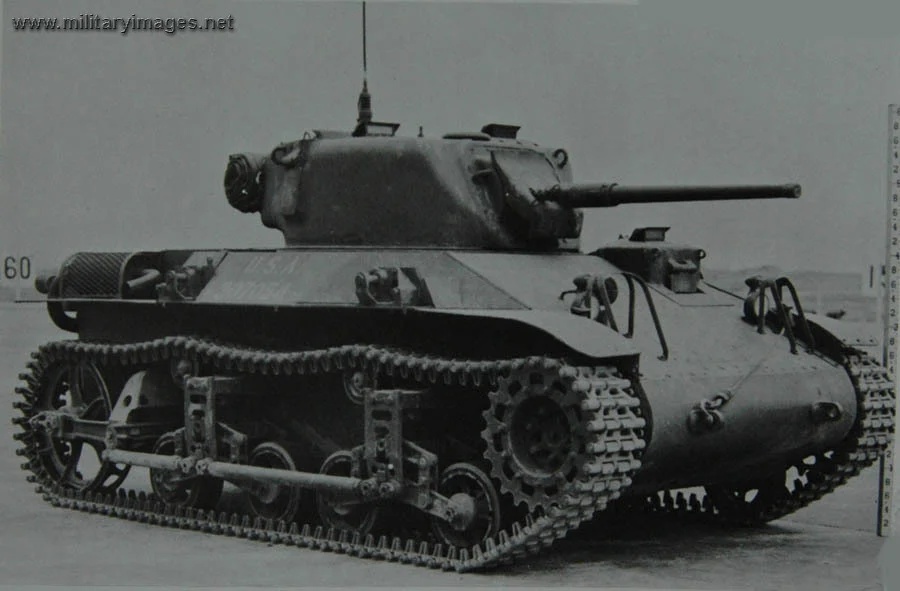-
We are implementing a new rule regarding the posting of social media links and Youtube videos, the rule is simple if you are posting these links please say something about it rather than just dropping what we call a "drive by Link", a comment on your thoughts about the content must be included. Thank you
- Extended Description
- Light Tank (Airbourne) M22, Locust.
Requirement for an airbourne tank was formulated at an Ordnance Department meeting in February 1941, attended by representatives of the Armoured Force and USAAF, and an outlined specification for such a vehicle was finalised in May 1941. It called for a tank of about 8 (short) tons in weight (half the weight of the M5A1 light tank), and correspondingly compact dimensions suitable for carriage either inside or beneath a transport aircraft.
Design studies were invited from J. Walter Christie, GMC and Marmon-Herrington. Of these, that submitted by Marmon-Herrington, was most promising and a pilot model, designated T9, was ordered. This design featured a 37mm M6 gun, a Lycoming engine, an armour maximum of 25mm, and modified vertical volute suspension.
The T9 pilot model was deilivered in the autumn or 1941 and in the light of trials, modifications were suggested including reshaping the hull front to improve shot deflection and the elimination of non essential fittings, like the power traverse and gyro stabiliser, to reduce overall weight. Two further pilot models, designated T9E1 were built incorporating these improvements and including an easily removable turret to facilitate air transportation. The modified design was ordered into production and 830 were built by Marmon-Herrington between March 1943 and February 1944. In September 1944 the T9E1 was redesignated 'Light Tank (Airbourne) M22' and classed as "limited standard" . The M22 was never used in combat by the American Forces, mainly because they lacked suitable glider or transport aircraft to carry it. The only means evolved for air transportation of this vehicle by US forces was slung beneath the belly of a C54 Skymaster transport plane. To do this the turret had to be removed and carried in the aircraft, being re-assembled with the tank on the ground, which was a severe limitation to its tactical value.
The M22 in British Service
The second T9E1 pilot model was shipped to Britain for Airbourne evaluation early in 1943. The British were designing the Hamilcar glider to carry the Tetrarch light tank (qv) in the airbourne role and this also proved capable of carrying the M22, later named the 'Locust'. A large number of M22's were supplied to the British under lend-lease for airbourne operations and a handful of these were landed by Hamilcar glider in the Rhine crossing operation by the British 6th Airbourne Division, March 24, 1945.










